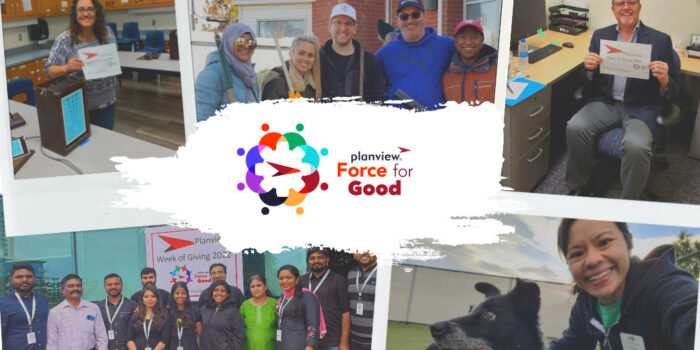At TechRuum, the strength of our teams is in each employee. We hire talented, bright…

Drift Happens: Strategic Drift and What to Do About It
Prevent strategic drift with these Agile-inspired tips

As executives, we tend to spend a lot of our time and energy on setting strategy – the direction in which we want the figurative ship to go. We search for inspiration, high upon the mountaintops, and emerge only after we have a direction we feel confident in sharing with the company at large.
But the real challenge isn’t in setting the strategy – it’s in keeping the ship on course, over time, especially as conditions change.
How do you communicate the strategic vision, and embed it into the hearts and minds of your team members so that it guides their discretionary behavior? What happens when the direction needs to change five degrees, when the ship is already in motion?
And then the least obvious, but perhaps the most impactful, question is: How do you keep drift from happening?
What is strategic drift?
Strategic drift, or at least, how we define it at TechRuum, is unintentional deviation from the agreed-upon direction. It can be helpful to define drift by what it is not:
Strategic drift is not experimentation.
Strategic drift is different from experimentation, which is essential for innovation. Experimentation is intentional, informed, and controlled – it’s taking calculated risks to test a hypothesis, and is encouraged in an Agile environment.
Strategic drift is not malicious.
Strategic drift is also different from any sort of malicious deviation from the strategy. What we’re talking about is not, “I don’t believe in the strategy,” or, “I want to burn this thing to the ground!”… which is a very different problem. Having one or more “bad actors” is not the same as strategic drift.
Strategic drift is unintentional.
Now let’s talk about what drift is: Strategic drift is unintentional. It isn’t one person deciding to take the ship off course – it’s a series of decisions, actions, or lack thereof that result in unintended consequences. It’s people not being clear on the vision, or making decisions without an understanding of the larger context that don’t align with the intended ‘big picture.’
Strategic drift is deviation from the agreed-upon direction.
I want to be clear here and say that any deviation from the plan is not inherently drift. At TechRuum, we believe that the real value of planning is the collaborative process itself, not necessarily the plans; deviating from the plan (or pivoting the plan) is neutral-positive, as long as it is intentional and informed and aligned with the strategic direction.
Drift, however, is different: It’s not agreeing to steer off course – it’s steering off course without realizing it.
The Cost of Strategic Drift
Strategic drift needs to be on your radar: The cost of drift has truly never been greater. As the metabolism of business continues to increase, the risk of unintentionally drifting off course grows exponentially.
In the Lean/Agile world, we often talk about the cost of delay: a way of communicating the impact of time on the outcomes we hope to achieve. The cost of drift, similarly, is a way of communicating the impact of misalignment on the outcomes we hope to achieve. Similar to cost of delay, it’s difficult to quantify – but very important to consider.
The cost of drift is actually two-fold.
There is the immediate, sunk cost of the resources spent moving in a direction that wasn’t aligned with the vision. And then there is the opportunity cost of how those resources could have been used instead.
Businesses today are planting the seeds for initiatives that might not come to fruition for five or 10 years. A few weeks or months of heading in the wrong direction can mean missing the boat on these opportunities, falling behind competitors, or missing the chance to compete altogether.
How to Actively Prevent Strategic Drift
We’ve defined what drift is and isn’t, and discussed the cost of drift. Now, let’s talk about how you can build structures and processes to help prevent drift from happening.
Continuously communicate a shared, living strategic vision
The absolute best drift prevention is a shared, living vision that is continuously communicated and reinforced upwards and outwards: what Lean people refer to as your “true north.” The more you keep your organization’s strategic vision front and center, the less likely your organization is to drift.
Of course, it’s helpful if that vision is clearly defined, easy to communicate, and strategically sound – and it’s on leadership to calibrate and re-calibrate so that that is the case.
Empower localized decision making
Let me reiterate here that without a shared, living vision that is continuously communicated and reinforced by leadership, drift is absolutely unavoidable.
However, if you have a clearly communicated and actively shared strategic vision, then you can take the next step to preventing strategic drift: Empowering leaders across your organization with the context and authority to quickly and swiftly make decisions.
If everyone is aligned on your “true North,” then those decisions will align with the strategic vision and you’ll be more likely to keep your course.
Promote alignment through OKRs and work visualization
You have a shared vision, and you have empowered, localized decision making: Now all you need is the structures in place to help your teams do the right things at the right time. Objectives and Key Results (OKRs) are exactly that: A framework for defining, aligning around, executing, and measuring progress toward key organizational goals.
Using OKRs – and by that, I mean using them across the organization as the way you prioritize, define, organize, and assess the impact of your work – gives you the structure to keep drift from happening.
Coupled with work visualization, which adds visibility into work priorities and progress in real time, organizations have the tools they need to stop drift before it happens.
Read Next: Everything You Need to Know About OKRs
Stop Drift Before It Happens
Especially in a hybrid environment, keeping teams aligned and focused on a shared strategic vision is hard – and it can seem like drift is inevitable. Keeping everyone aligned on the strategic vision is one thing.
Understanding that the vision can adjust, conditions can (and will) change, is the first step toward staying aligned.
From there, a clearly defined and often-communicated direction, paired with a culture of empowerment, reinforced by OKRs and work visualization, can stop drift before it happens.
Embrace uncertainty, adapt at speed
Maintaining a strong connection between strategy and execution has never been more important than in today’s uncertain market. Learn how leading companies accelerate on-strategy delivery in this global benchmark study.
Uncover five key findings that explain why some companies move faster and adapt with confidence when disruptions happen — while others don’t.
Find out more: The State of Strategy Execution: Embracing Uncertainty to Adapt at Speed
Source link



Comments (0)